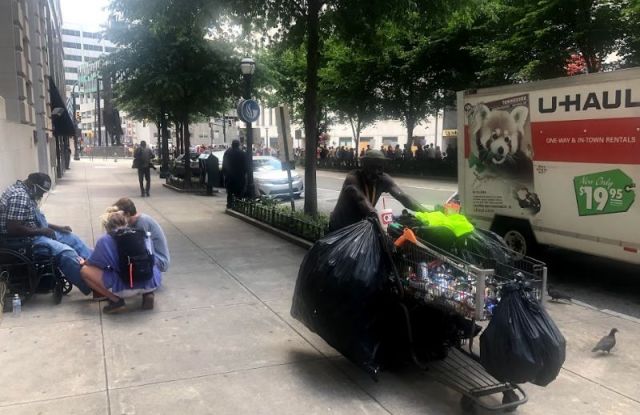Three Sources of Systemic Racial Injustice

We come to a moment in history where we have the opportunity to address racism at multiple levels. Personally, culturally and systemically.
Usually the conversation will take place in the first two levels. It’s much needed. Let’s ask, “In what ways am I as a person, especially if I claim to follow an emancipator named Jesus, not loving those of races different than my own?”
And “In what ways does our culture support racisim?”
But where we need to pay particular attention is the less visible ways that bias and racism is built into the systems that we depend on to sustain our commitment to liberty. George Floyd was a victim of racism at all three levels. Let’s look at the justice system in particular. Even if you were to defund the police department of Minneapolis, you’d still face the injustice built into the system.
The American criminal justice system is stacked against minorities in three ways. This article by Clark Neily details how (portions excerpted here):
(1) unconstitutional overcriminalization;
(2) point-and-convict adjudication; and
(3) near-zero accountability for police and prosecutors.
1. Unconstitutional overcriminalization.
A Shreveport, LA, ordinance made it illegal to wear saggy pants. There were 726 arrests for violating that law during the 12 years it was on the books—96 percent involving black men—and it wasn’t until police shot and killed a man named Anthony Childs while trying to arrest him for wearing saggy pants that the law was finally repealed.
It is immoral to use force against another person without sufficient justification, and that is true even when the perpetrator is acting at the behest of the state. At the risk of stating the obvious, the fact that a person prefers the “wrong” not-particularly-harmful intoxicant is not a sufficient moral justification for doing violence to that person. Nor should it represent a sufficient constitutional justification for employing state violence, but unfortunately—and to its immense discredit—our judiciary says otherwise.
Combining the powerful public-choice dynamics that motivate legislators to constantly and indiscriminately expand the scope of the criminal law with the judiciary’s feckless refusal to enforce the Constitution’s prohibition against unjustified restrictions of liberty results in a criminal justice system that routinely does violence to perfectly decent people for non-morally-wrongful conduct that presents no real threat to other people or to society. That is the essence of “unconstitutional overcriminalization,” and it does incalculable damage to the moral and political legitimacy of our criminal justice system.
2. Point-and-convict adjudication.
Unconstitutional overcriminalization could never have become the menace it is today if all criminal charges were adjudicated using the constitutionally prescribed mechanism of a jury trial. That’s because jury trials are expensive and require twelve people to take time away from their jobs, families, and personal lives in order to decide whether to condemn a fellow human being and authorize the often quite vicious punishment the state seeks to inflict. If people are constantly being asked to put their lives on hold in order to help adjudicate trivial “crimes” such as low-?level marijuana distribution, it will not be long before they send a clear message to prosecutors to stop wasting their time—and taxpayer money—on the enforcement of mickey-mouse laws that don’t make people’s lives any better or the community any safer.
Coercing criminal defendants into waiving their constitutional right to a jury trial is of course patently unconstitutional. But if you’ve been paying attention, you can probably guess where the story goes next. That’s right: Straight to the doorstep of our feckless judiciary, which has made itself complicit in this point-and-convict style of coercive adjudication by systematically turning a blind eye. Thus, for example, in a 1978 case called Bordenkircher v. Hayes, the Supreme Court rejected a due process challenge to a prosecutor’s nakedly coercive threat to increase a defendant’s exposure from a maximum of ten years to life imprisonment if he refused the prosecutor’s invitation to accept a five-year plea offer. And in a 1992 case involving the spy Jonanthan Pollard, the D.C. Circuit held that it is categorically non-coercive to threaten to indict a defendant’s relatives in order to exert plea leverage.
Thus, if you think of the criminal justice system as a massive woodchipper that sucks in people and spits out convicts, the jury trial was meant to be a kind of aperture-restrictor over the maw of that ravenous machine. Again, trial by jury is a relatively expensive and inefficient mechanism for adjudicating criminal charges, and it ensures that neither the government nor society at large takes lightly the act of condemning human beings and putting them in cages. Coercive plea bargaining represents the government’s success in prying off that aperture-restrictor to enable the criminal-justice woodchipper to operate at full capacity and ensure that America continues to have the highest incarceration rate in the world.
3. Near-zero accountability for police and prosecutors.
American police and prosecutors wield extraordinary power over the lives of others—including even the power of life and death—and yet they are among among the least accountable people on the planet. And just because the killers of George Floyd are being prosecuted for murder, no one should be fooled into supposing that that would have happened without a viral video of the incident, or if the officers’ violent assault had merely injured Floyd instead of killing him. The reality is that police are almost never prosecuted for the crimes they commit under color of law, and the judiciary (starting to see a theme here?) has helped ensure that other avenues of accountability, including particularly the ability to bring civil-damages claims, are largely toothless.
Notably, what makes that fundamental lack of accountability particularly galling is that police and prosecutors are in the accountability business—for other people. Just listen to the closing argument of any prosecutor (if you can manage to find a criminal jury trial), and you will hear it dripping with sanctimony as the prosecutor recounts the details of the defendant’s transgressions and imprecates the jury to hold him or her responsible.
In short, we have a massive double standard between the level of accountability to which members of law enforcement hold the rest of us and the level of accountability to which they permit themselves to be held—which again, is very close to zero.
America’s criminal justice system is fundamentally rotten, but the effects of its dysfunction are not felt equally by all Americans. Instead, it is the marginalized and politically disenfranchised who bear the brunt of that injustice, including particularly communities of color.



Deep and thoughtful, Seth. Much new here to be ruminated. Thank you for drawing my attention to these matters that I have not given 1 second of prior thought. Thinking.
Thanks, Brian. It is time for our society to make some changes.
I pray bountiful blessings to you!!! This article hits home. Before my son was born, my prayer has always been that Jesus be a fence around him, keep him out of the systemic racism that has plagued this country. It’s hard to pray big prayers when I can’t get pass the attack from this hateful enemy. I named my son after both biblical prophets and one that I thought may give him a glimmer of hope if someone was just to go by his name before they saw his skin.
Nowadays, I’m just reminded that God freed the Hebrew children eventually. They suffered for hundreds of years before they experienced their Exodus, maybe Black people will experience ours soon.
Sorry for all of that to just say I resonate with your words and look forward to seeing them! Thank you
Hospitals around the country undergo regular reviews by the Joint Commission, a government-run hospital accreditation agency that provides an independent review to do their best to ensure that hospitals are at least providing reasonable care without any gross negligence. A similar organization should be established to provide independent oversight of police departments and the legal system country-wide. They could also independently review any complaints brought against departments.
Seth, as always, thanks for being a deep thinker and for sharing your insights.
That’s a good idea, Jake.
Seth,
Where did you get your information? What articles or websites did you use or did you write all of this on your own?
Clark Neily wrote most of this. The link is up there at the beginning of the blog.
You are brave, Tanisha. May this be the last generation that has to fight and defeat such an enemy as this one.
Oh!! That is some deep deep stuff. Thank you for always sharing the best of the best. I love your writings the most though.